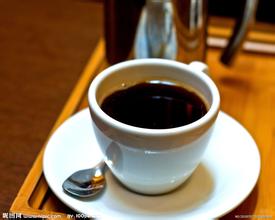Introduction to the characteristics of coffee flavor and taste of Arusha Coffee Manor in Tanzania with elegant acidity
. Since 1986, it has accepted the adjustment plan of the International Monetary Fund (IMF) and the World Bank, and implemented the "three-year Economic recovery Plan" for three times in a row. The Tanzanian government regards poverty alleviation as the focus of its work, implements the economic reform policy centered on economic restructuring, promotes the process of economic liberalization and privatization of state-owned enterprises, and adheres to moderately tight fiscal and monetary policies. so that the national economy has been slowly rebounded. At the same time, we should maintain close relations with Western donors and international financial institutions, and seek to attract foreign investment, reduce foreign debt and obtain more assistance. After 2001, Tanzania established the "National Business Association" headed by the President and the "Investment steering Committee" headed by the Prime Minister, reduced and reduced taxes on foreign-funded enterprises and import taxes on high-tech products, and introduced a micro-credit policy to support the development of small and medium-sized enterprises. IMF and the World Bank have determined that Tanzania has reached the completion point of the heavily indebted Poor countries (HIPC) initiative and will reduce its foreign debt by $3 billion over 20 years. In October 2002, IMF established its first technical assistance centre in Africa, the East African Technical Assistance Centre, in Tanzania. Tanzania's macro-economy is running well, tourism is developing strongly, the investment environment is further improving, and foreign direct investment continues to grow. There are seven agro-ecological zones in Tanzania, each of which has its own dominant crops, but all of them grow major food crops. According to the classification of farming in Tanzania, crops are mainly divided into three main categories: food crops, traditional export crops and non-traditional export crops. Food crops are further divided into three categories: main staple crops, drought-tolerant food crops and other staple crops. Staple crops include corn, rice and wheat; other staple crops include Irish potatoes, sweet potatoes, bananas, plantains and sugar cane; and drought-tolerant crops include cassava, sorghum and corn. The main traditional export crops are coffee, cotton, cashew nuts, tobacco, tea, sisal, pyrethrum and cloves. Non-traditional export crops include all kinds of oil crops, legumes, spices, cocoa and decorative flowers.
Southern coffee is rich in floral aromas, smooth on the palate with elegant acidity. 2) SweetMarias's introduction to TZ (with emphasis on flavor / quality) Tanzanian coffee has the excellent pedigree of the Middle Eastern non-washed bean family, bright acidity, rich and irritating flavor. There is no doubt that Kenyan coffee takes the lead in this family, but Tanzania has many advantages that are very similar to those of Kenya. Round beans are often specially selected and expensive, but sometimes they taste like moldy beans, which is not in line with their price. As we all know, garden beans have become a unique flavor of coffee, and sell well in the United States, favored by many roasters. Tanzania is a potential coffee, but sometimes its flavor is not really shown. One reason is that Tanzania does not have the same road infrastructure as Kenya, and coffee in containers ages (or at a high temperature) during transportation. I often drink very good Tanzanian samples, but sometimes I also drink very bad coffee. The problem is that Tanzania only knows that no matter whether the quality is good or bad, they can make a profit from the beans. So what is the motivation for locals to pick and take good care of coffee in time to prevent such defective beans? Blackburn Estate from Ngorogoro has always been an excellent variety and has the highest evaluation in recent memory. The Ruvuma producing area also has a good flavor, which is the southern coffee with the northern gene. The beans of Kibo are bulky and seem to have been cooked at high temperature. The coffee in the south is clean and full, and its mild and unexciting flavor is second only to Kenya. In the past, we have had a small number of caffeine beans from Nkoanekoli and Ngorongoro that represent a step forward compared to other producing areas. So please remember that if you have a Tanzanian spot in front of you now, you have to put aside my mockery because it must be of good quality. Most of the good Tanzanian coffee comes from Mt in the north. Kilimanjaro, Moshi, Mbeya producing areas and Songera producing areas flowing south to the Ruvuma River and Ruvuma basins

Important Notice :
前街咖啡 FrontStreet Coffee has moved to new addredd:
FrontStreet Coffee Address: 315,Donghua East Road,GuangZhou
Tel:020 38364473
- Prev

Introduction to the characteristics of coffee flavor and taste varieties of Bolivian snow vein manor with dried almonds
In the past, coffee trees in Bolivia used to act as hedges and ornaments around the garden. Real commercial production began in the early 1950s. The coffee industry in Brazil was seriously damaged by the great frost in 1975, while Bolivia (Bolivia) benefited from it and developed rapidly. The origin of Bolivian coffee: Bolivian coffee at an altitude of 180 Muhami 670 meters.
- Next

Rich taste, strong flavor of Indonesia Fuyin Manor Kopi Luwak civet coffee flavor
Mantenin's leaping acid mixes with the richest aroma, giving you a relaxed body flavor to a lively factor in a mild fragrance, and its outstanding taste captivates many suitors. In the 17th century, the Dutch introduced Arabica seedlings to Ceylon (present-day Sri Lanka) and Indonesia. In 1877, a large-scale disaster hit the Indonesian islands, and coffee rust destroyed.
Related
- Does Rose Summer choose Blue, Green or Red? Detailed explanation of Rose Summer Coffee plots and Classification in Panamanian Jade Manor
- What is the difference between the origin, producing area, processing plant, cooperative and manor of coffee beans?
- How fine does the espresso powder fit? how to grind the espresso?
- Sca coffee roasting degree color card coffee roasting degree 8 roasting color values what do you mean?
- The practice of lattes: how to make lattes at home
- Introduction to Indonesian Fine Coffee beans-- Java Coffee producing area of Indonesian Arabica Coffee
- How much will the flavor of light and medium roasted rose summer be expressed? What baking level is rose summer suitable for?
- Introduction to the characteristics of washing, sun-drying or wet-planing coffee commonly used in Mantenin, Indonesia
- Price characteristics of Arabica Coffee Bean Starbucks introduction to Manning Coffee Bean Taste producing area Variety Manor
- What is the authentic Yega flavor? What are the flavor characteristics of the really excellent Yejasuffi coffee beans?

